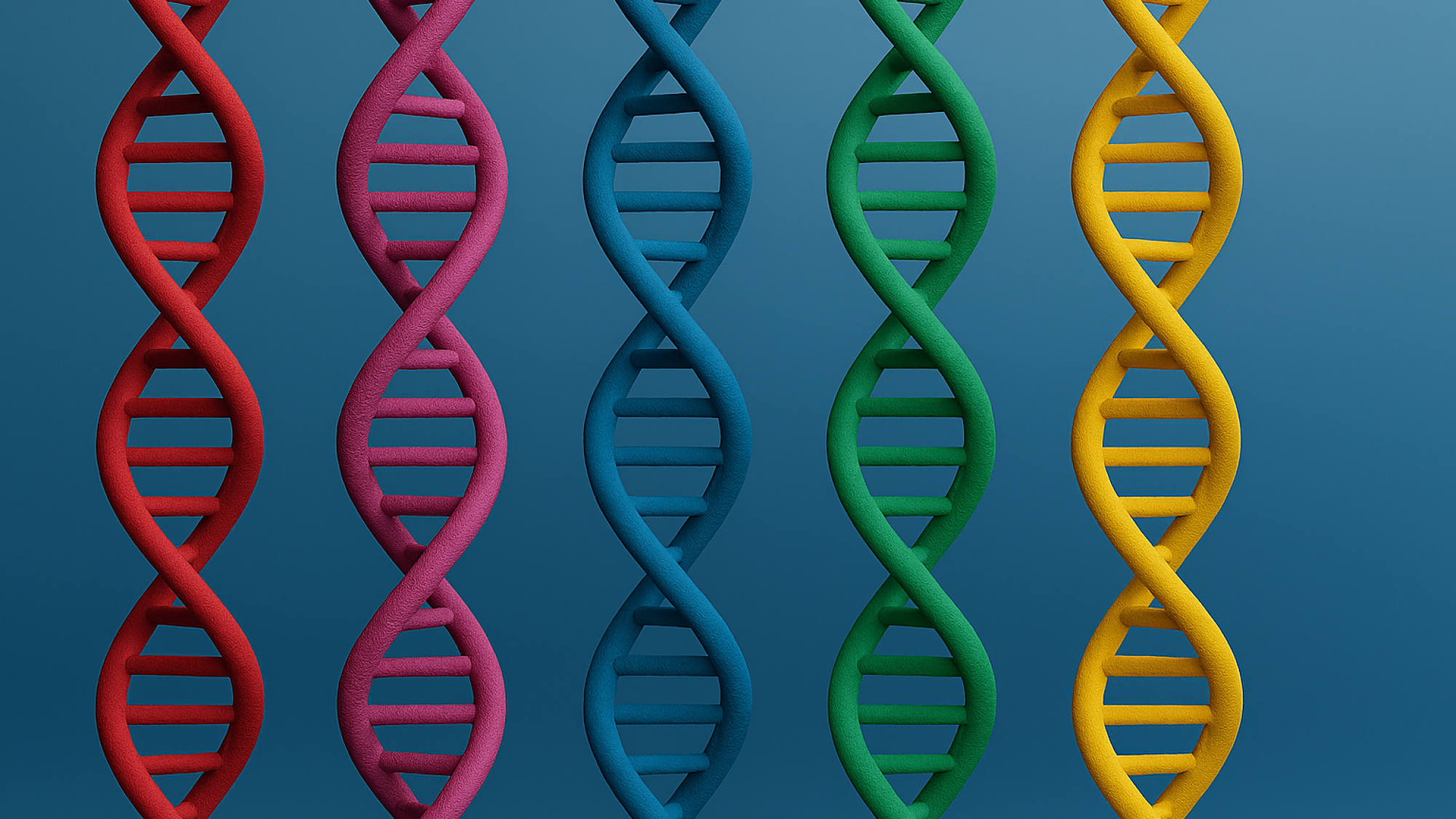Decoding health and disease
The purpose of this blog is to present, discuss and share knowledge on topics related to population health and medical research. Blog posts are written mainly by researchers from the Faculty of Medicine.

This is the start of our new “What is…” blog post series. The series explores key concepts related to health and medical research. In the first part of the series, we explore the fascinating world of genes.
What is… a gene?
The human genome is stored in chromosomes, which are located in the nuclei of cells. Nearly all our cells contain 46 chromosomes, half of which are inherited from the mother and half from the father. Chromosomes are made up of chains of DNA molecules that are wrapped around proteins. The DNA molecule contains special segments, genes, which provide the instructions for the construction of important molecules that have essential functions in our bodies.
By following the instructions found in our DNA, proteins can be produced in a multi-step process called protein synthesis. First, the information stored in DNA is copied to a smaller molecule named RNA, in a process called transcription. After removing any unnecessary parts from the RNA, it is time for translation, in which an amino acid chain is formed based on the instructions from RNA. Finally, a long amino acid chain is folded into a three-dimensional protein, which is now ready for action!
Proteins may act as building blocks for cells, have roles in cell signaling or take part in immune defence, for example. However, some genes do not encode proteins, but regulatory RNA molecules instead.
There are approximately 20,000 genes in the human genome. In addition, our genomes contain large segments of DNA without any protein-coding genes. These non-coding regions of the genome have important functions, for example, in regulating the activity of genes.
To summarize, genes are like an instruction manual for guiding our development and growth. Genes are responsible for directing the functions of the human body as well as determining various characteristics, such as eye and hair color.
Significance of genetic variation
For the adaptation and survival of humans and other species, it is important that there is variation in our genomes. Genetic variation means that there are differences in the DNA molecule between different individuals. Genetic variation is useful, for example, when adapting to different environmental circumstances. Despite genetic variation, human genomes are remarkably similar, as genomes of any two humans are >99.5% similar.
Genetic variation can be caused by mutations, i.e., changes in the genetic code. Mutations can happen when a cell is dividing; for example, if an error occurs when copying information from the DNA molecule. Additionally, genetic variation increases every time two reproductive cells (an egg and a sperm cell) are combined and a new, genetically unique human is born.
Due to genetic variation, humans have different inherited traits. For example, some people can consume products containing lactose, while these products cause unpleasant digestive problems for the lactose intolerant. This is because the LCT gene involved in the digestion of lactose has multiple forms, known as alleles. The LCT gene contains the instructions for making an enzyme called lactase, which breaks down lactose in our intestines. If a person has inherited an allele causing lactose intolerance, their body cannot digest lactose, and therefore lactose-containing products cause digestive problems, such as stomach pain and diarrhea. However, if a person has inherited the other allele, they can consume lactose-containing products. So, if you are able to eat and drink products containing lactose without any symptoms, you can thank your genes for that!
How do genes affect our health?
What are the pros and cons of genes? All in all, genes have significantly more beneficial than harmful effects. After all, genes contain the important instructions for the proper function and development of the human body.
However, sometimes, for example, due to a mutation, a certain gene may not function properly, which will cause a disease. Most rare disorders, such as the Marfan syndrome, are caused by rare genetic changes in one gene. Marfan syndrome is caused by a genetic change in the FBN1 gene, which contains instructions for making a connective tissue protein called fibrillin-1. This genetic change causes connective tissue to be more fragile than normally, which affects the strength and elasticity of tissues. Symptoms of the syndrome include, e.g., unusually long limbs, joint problems and pain.
In addition to rare disorders, genetic changes affect common diseases. In polygenic diseases, such as celiac disease or asthma, multiple genes contribute to the risk of disease. In this case, inheriting one allele that increases the disease risk does not mean one will develop the disease. Instead, one usually needs to inherit multiple risk alleles. It should also be noted that, in addition to genetic changes, environmental factors, such as smoking or being overweight, also affect the risk of most diseases, and the risk may additionally be affected by interactions between genes and environment.
Genes and medical research
Genes are extremely valuable in medical research. By investigating genes, we obtain novel knowledge on specific biological mechanisms causing or affecting different diseases. Identification of genes, genetic changes and biological mechanisms affecting disease risk further enables the development of novel medications.
Information obtained from genes can also be utilized in different medical and epidemiological study settings. One of these approaches is causality research in which cause-and-effect relationships are investigated. Information on genetic changes can also help identify individuals at increased risk of disease, as well as guide treatment and aid in disease prognosis.
In the next blog post of our “What is…” series, we will focus on genetic tests. Stay tuned!
Authors:
Anni Heikkilä
Minna Karjalainen
The purpose of this blog is to present, discuss and share knowledge on topics related to population health and medical research. Blog posts are written mainly by researchers from the Faculty of Medicine.